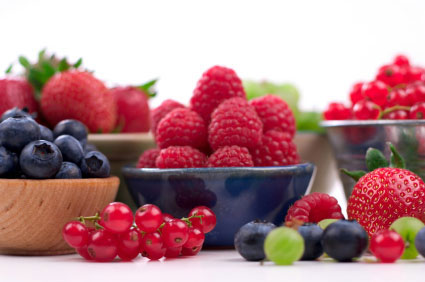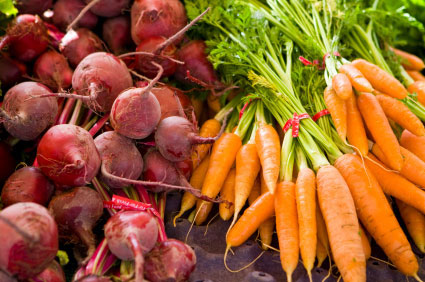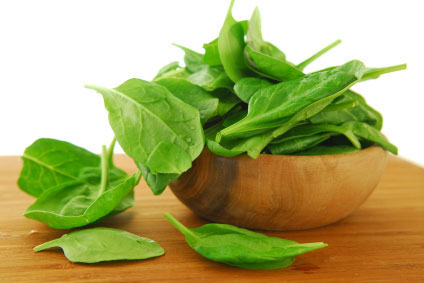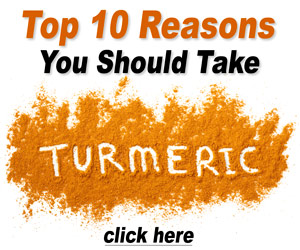Overview of Antioxidant Foods
Antioxidant Foods

While there are many foods that contribute to overall health and glowing wellness, foods that contain antioxidants have a special ability to actually protect the body from the formation of free radicals. Free radicals are the toxic off-shoots of many of the metabolic processes that go on the body on an every-day basis. Particularly if we expose ourselves to high amounts of pollutants, cigarette smoke or chemically-altered, processed foods, our body has to work much harder to neutralize free radicals from forming cellular oxidation.
Foods that contain high amounts of antioxidants help us to counteract these processes, allowing us to not only slow the signs of aging, but also to lower our likelihood for developing degenerative diseases such as cancer and Alzheimer's. Many antioxidants also help to regulate blood sugar levels, an important process in preventing diabetes, as well as obesity, skin wrinkles and age spots, and many other degenerative diseases.
We want less of these free radicals because they are responsible for cellular destruction. Free radicals create unhealthy cells, and are clearly linked to the formation of cancerous cells in the body, as well as other general forms of oxidative damage. Many of today’s modern “degenerative diseases,” such as cancer and heart-disease, are linked to increased free-radical exposure. And while all of us have a normal amount of free-radicals in the body at any given time, antioxidants help us to keep that number in a healthy range.
Studies show that anti-oxidant rich food can actually help to increase our life-span, as well as slow the signs of aging. Many people report feeling a glowing quality to their skin, mental well-being, as well as an overall increase in energy levels when they eat more antioxidant-rich foods. Antioxidants also act as enzymes to support your body’s natural processes, such as digestion and cellular repair. Common forms of antioxidants in the foods we eat include beta-carotene, melatonin, Vitamin C, Vitamin A, glutathione, selenium, vitamin E, lutein, and alpha lipoic acids.
Other benefits of antioxidant foods may include:
- An ability to stop or lower the rate of inflammation
- An ability to aid in weight loss through increase fat-burning capacities
- May aid in preventing diabetes
- Can help to lower blood pressure
- May aid in regulating the body’s metabolism, creating an optimal level for weight control
- Can help to reduce harmful cholesterol forms known as LDL
- Can protect us against heart disease and cancer
- May increase the assimilative properties of the body in regard to digestion
- May aid the body in overall detoxification processes
- Helps to promote overall digestive processes
A recent study from the USDA analyzed the antioxidant content of commonly consumed foods. Researchers tested over 100 foods and presented a list of the top 20 fruits, vegetables and nuts that they studied. Here is a list of some of the foods with the most anti-aging, body-charging power:
- Small red bean
- Wild blueberry
- Red kidney bean (dried)
- Pinto bean
- Blueberry

- Cranberry
- Artichoke (cooked hearts)
- Blackberry
- Prune
- Raspberry
- Strawberry
- Red delicious apple
- Granny Smith apple
- Pecan
- Sweet cherry
- Black plum
- Russet potato
- Black bean
- Plum
- Gala apple
Other Antioxidant-rich Foods and Their Health-boosting Qualities
Whole Grains: Whole grains such as millet, wheat and rice are often forgotten about when we discuss foods that are high in antioxidants. Many grains have high levels of the cancer-fighting antioxidant phytic acid (IP-6). Grains are also high in antioxidant phytochemicals, such as the highly powerful Vitamin E. This antioxidant is linked to cancer prevention, boosted immunity, lower incidences of Alzheimer's disease, as well as arthritis treatment and prevention.
Green and Black Tea: The most popular drink in the world, tea is packed full of antioxidants called flavonoids. Some estimates even state that these two teas have up to ten times more antioxidants than fruits and vegetables. One study from the Institute for Cancer Prevention in New York found that the catechins in green and black tea can significantly aid human health, including cancer prevention, whole-body detoxification, and the reduction of cancer-activity, blood clot formation and atherosclerosis. When the catechins of green tea are oxidized through the fermenting process of making black tea, other important free-radical fighting theaflavins are released.

Carrots: High in beta carotene, carrots protect us against a number of health issues including lung cancer, stomach cancers, breast cancer and heart disease. Some studies show that carrots can prevent the proliferation of arthritis by up to 70 percent.
Blueberries: Wild blueberries may be nature’s most perfect food. This antioxidant power-house has the single highest concentration of antioxidants per serving. They are also high in fiber, vitamins and minerals. Berries are high in anthocyanins and proanthocyanidins, two forms of antioxidants that aid in the prevention of cancer and heart disease. These are also key components in fighting free radicals in general. Blueberries may slow the process of age-related cognitive function failure. In other words, blueberries may even keep your mind young for longer!
Broccoli: Broccoli, as well as other vegetables in the cruciferous family like cauliflower and Brussels sprouts, are super-high in a certain form of antioxidant known as indole-3-carbinol (I3C). This antioxidant plays a role in breaking down estrogen in the body. It is related to supporting the body in avoiding estrogen-related cancers such as breast, ovarian and cervical cancer. The deeply green broccoli may also protect us against cervical dysplasia, cancer and heart disease.
Kale: High in manganese, copper, Vitamins C, B1, B2, B6, and Vitamin E, kale is a deep-green carrier of many antioxidant phytonutrients. One serving gives you 200% of your daily needs for Vitamin A and 89% of your vitamin C needs. Perhaps the highest of these phytonutrients is kale’s extremely high beta carotene content, an important antioxidant that may prevent skin cancer, colon cancer, arthritis, asthma, lung disease and other forms of cancer.
Lemons and Limes: These citrus fruits contain phytonutrients that hold very powerful antioxidant and antibiotic potentials. Extremely high in the powerfully antioxidant-creating Vitamin C, this antioxidant scavenges free radicals both inside and outside of cells, preventing them from damaging cell membranes, a process which causes inflammation and swelling in the body. Lemons and limes hold a special type of flavonoid composition which has been linked to cancer-fighting behavior, as well as the ability to boost the immune system, preventing the common cold and the flu. Limes possess flavonol glycosides, a type of antioxidant which stops cancerous cells from recreating themselves in cancel cell lines. Limes and lemons also possess a powerful antibiotic effect, to such an extent that they are now being used in Africa as a natural remedy dealing with challenging epidemics of cholera.
Spinach: Spinach has been quintessential food in the quest for human strength and stability. Extremely rich in the antioxidant lutein, spinach holds the powers of increasing the amounts of colorful pigments in the macula of the eyes. This is the part that is most sensitive, and therefore, most prone to injury or degeneration. The antioxidants in spinach help to keep this area of the eye protected. Studies have shown that eating spinach reduces our chances of getting cataracts and macular degeneration. Antioxidant components in spinach prevent sun-damage in the eyes, as well as heart disease.
Beets: From the root to the leaf, beets are an excellent source of folacin, Vitamin C, potassium, Vitamins A, calcium, iron, and fiber. The antioxidant-rich juice of the beet is high in a form of plant pigmentation containing betaine, a phytonutrient that stimulates liver function, builds red blood cells, and contributes to the overall healthy tone of our blood. Studies have shown that beets hold antioxidant properties that inhibit the formation of tumors, a process which significantly reduces the chances of developing cancer.
Soy: Soy has also been linked to these health boons of boosting the body’s ability to ward of cancer and other diseases. If may also lessen the effects of menopause, reduce the likelihood of osteoporosis, and lower bad forms of cholesterol. Soy contains Genistein and estrogen-mimicking isoflavones. These components help to prevent breast, colon and prostate cancers.
Almonds: Recently, the Journal of Nutrition hailed almonds as one of the best antioxidant-rich foods for the skin in particular. This is related to the high levels of Vitamin E in the elegant nut. The skin of almonds is high in an antioxidant known as a flavonoid, a form of free-radical neutralizer known for its ability to protect cells from damage, as well as lower levels of LDL, or "bad" cholesterol. Flavonoids help to keep skin cells working in optimal condition, reducing the signs of aging and wrinkles. Different from wine or green tea, almonds have a unique combination of flavonoids unseen in other antioxidant-rich foods. One scientist from The Antioxidants Research Laboratory at Tufts University stated the following in regard to almonds and skin health” "Further blood tests demonstrated that eating almonds with their skins significantly increases both flavonoids and vitamin E in the body. This could have significant health implications, especially as people age."




